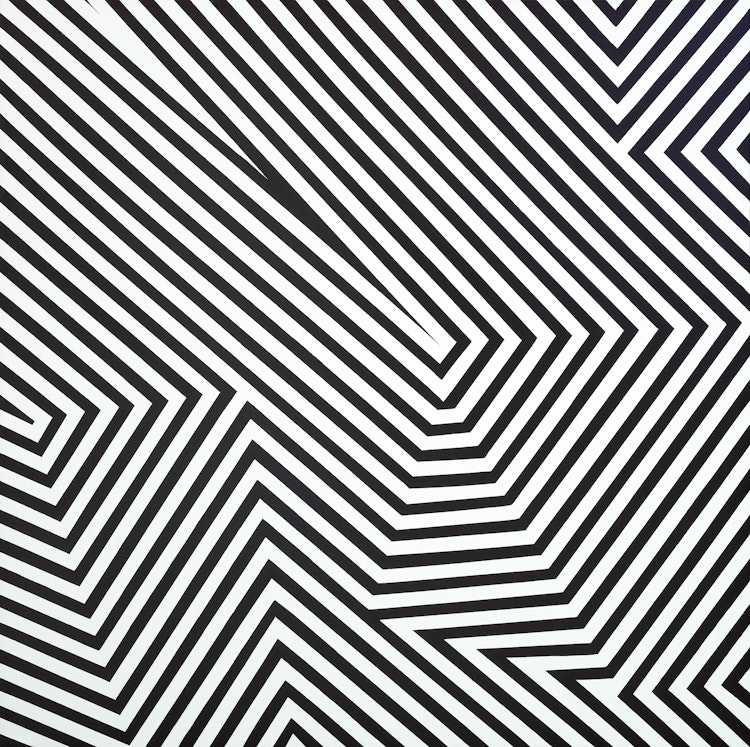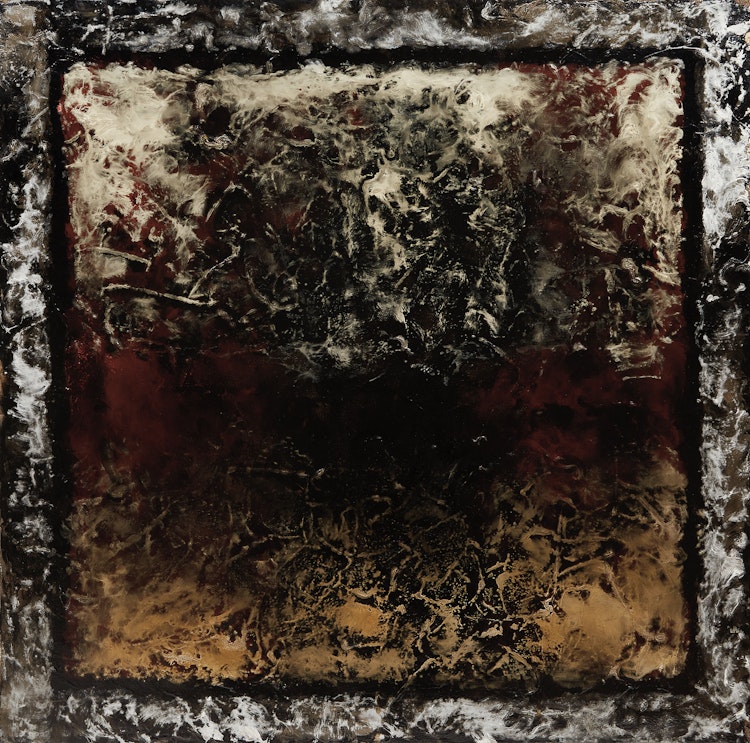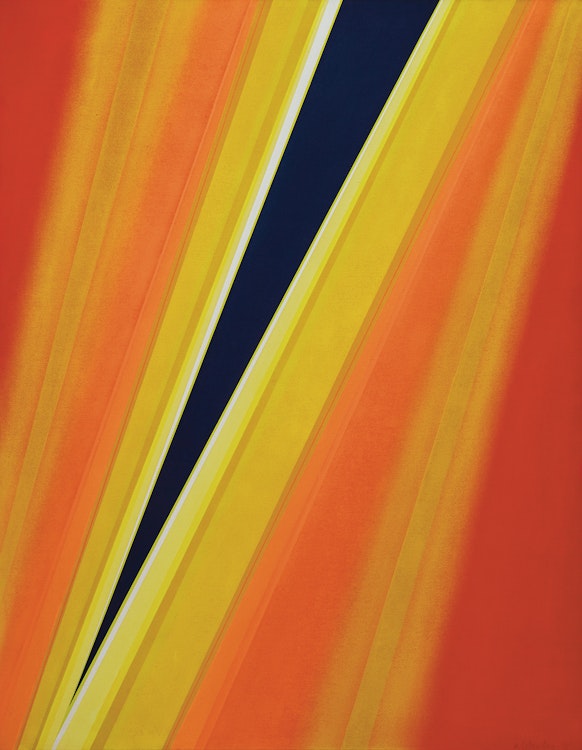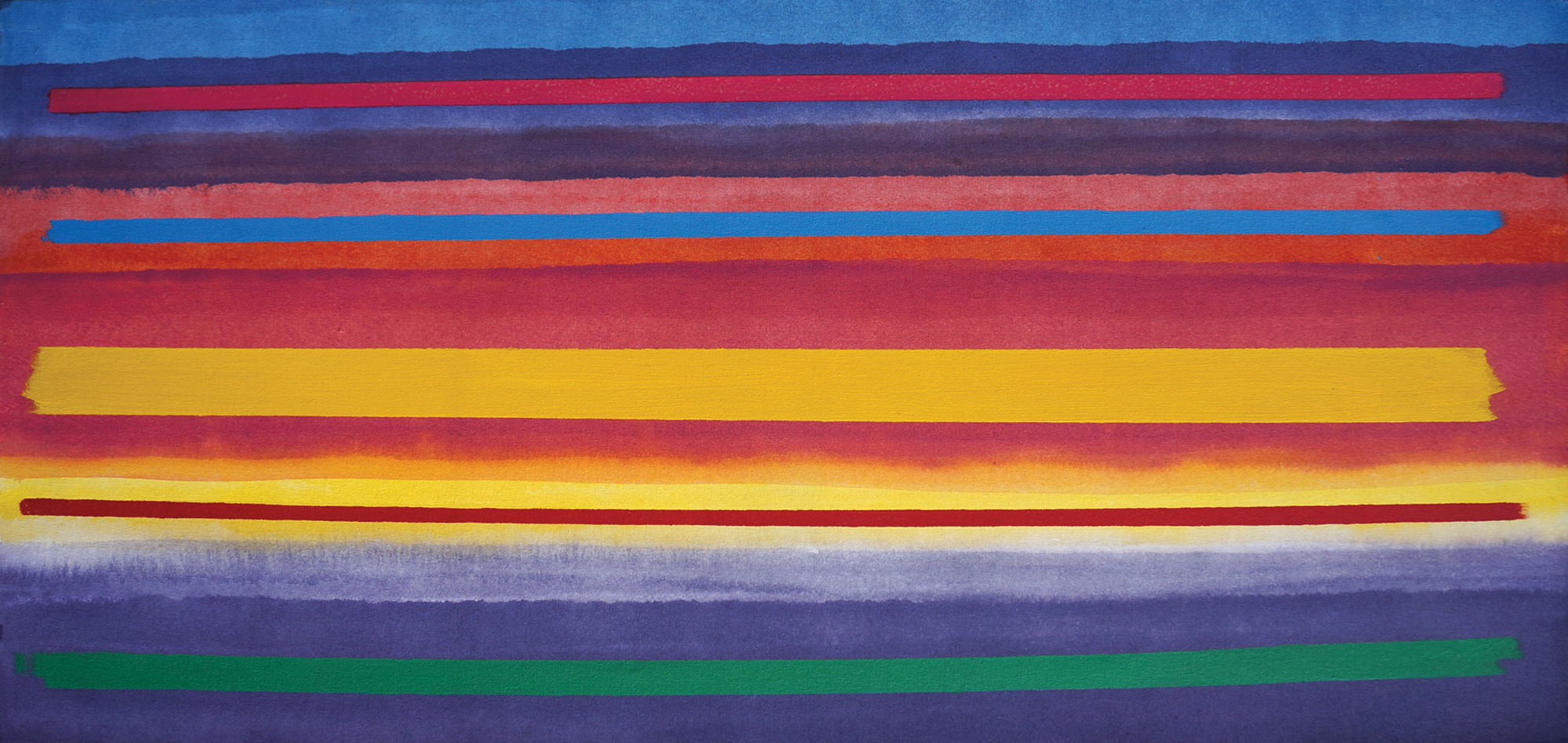
Cowley Abbott’s 2021 Fall Live Auction of Important Canadian Art presents strong examples of Quebec post-war abstract painting, by artists who took varying approaches to gestural and hard-edge styles within a thriving and groundbreaking art scene.
Canada’s breakthrough into abstraction largely began in Montréal in the 1940s. Two avant-garde artistic groups came to dominate the Quebec art scene: les Automatistes, formed in the mid-1940s who shared an interest in gestural abstract painting inspired by the surrealist practice of automatic writing and drawing, and the Plasticiens, a hard-edge abstraction movement formed in 1954 by a group of artists who sought a return to order and control.
The catalogue cover lot, Sans titre (circa 1959) (pictured above) is a masterpiece by Jean Paul Riopelle, one of Canada’s most celebrated artists. The oil on canvas contains energetic brushstrokes that are at once controlled and spontaneous. Riopelle was a prominent member of Les Automatistes and signatory of the 1948 manifesto Refus Global, until he moved to France in 1947. There, he became acquainted with André Breton and the Surrealist circle. After many exhibitions and an active artistic production, including Sans titre (circa 1959), Riopelle returned to Québec in 1972.

Rétine Ying Yang by Marcel Barbeau is a bold and mesmerizing black and white abstract canvas. A fellow member of Les Automatistes, Barbeau was also influenced by post-war abstract movements in France, and his travels in Europe and the United States. These experiences helped him form a distinct and more international style of abstract painting. Rétine Ying Yang is aligned in formalist concerns with Op Art, an extension of hard-edge painting characterized by lines, shapes and movement that appear to the viewer as a result of optical illusions. The painting was completed in 1966, while Barbeau was living in New York City and exhibiting with the American Op Art School.

Born in 1923, Jean McEwen trained as a pharmacist at the University of Montreal and wrote poetry for Québec based literary journals. As a self-taught artist, he was most interested in the feelings that paintings gave him and the exploration of colour and light. McEwen was mentored by Automatiste artist Paul Émilie Borduas in the early 1950s and traveled to Paris for a year to study with Jean Paul Riopelle. Following his European sojourn, the artist adopted a style that loosely combined French Impressionists as well as American Abstract Expressionism. Suite des pays vastes, dating to 1972, embodies McEwen’s signature style of large, open areas of layered and softly-applied colour, creating complex and moody compositions.

As one of the few women artists at the centre of abstract art in Canada, Rita Letendre holds an important position in Canadian art history, having produced some of the most innovative examples of post-war art. She is an example of a painter who fluctuated between gestural and hard-edge abstraction throughout her prolific career. WYKI, dating to 1975, explores her fascination with depicting speed and vibration. The use of the airbrush technique, combined with sharp wedges or arrows that cut across the image plane, was characteristic of her large canvases from the decade.

Jacques Hurtubise attended the École des beaux-arts de Montréal until 1960, when a grant enabled the young painter to spend nine months in New York. There, he became enamored with the spontaneous and gestural painting of the Abstract Expressionists, such as De Kooning and Pollock. Hurtubise divided his time between Montreal and New York for much of the 1960s, as he developed his unique style that straddled painterliness and hard-edge painting throughout his career. Rose Slush contains Hurtubise’s signature ‘gestural splash’ forms, during the 1980s when he was exploring the theme of symmetry.
These five abstract paintings in the November 22nd auction serve as fantastic examples of the varying and converging directions taken by Quebec’s avant-garde artists in the post-war era. Of course, the sale also includes numerous other important works of art on offer, by historical, Group of Seven, abstract and realist, Indigenous and contemporary artists. The complete catalogue of artworks included in the Fall Live Auction of Important Canadian Art can be found by following this link. For more information on the sale, to book a private preview appointment, and for information on our consignment process, please contact us at info@cowleyabbott.ca.










